1. The Timeless Appeal of Black and White in Bedroom Interiors
Black and white interiors are a classic choice that never goes out of style. The timeless elegance of this monochromatic color palette brings a sense of sophistication and balance to any bedroom. In the world of interior design, black and white are often used to create bold, dramatic spaces, yet they can also be softened with the right lighting and textures.
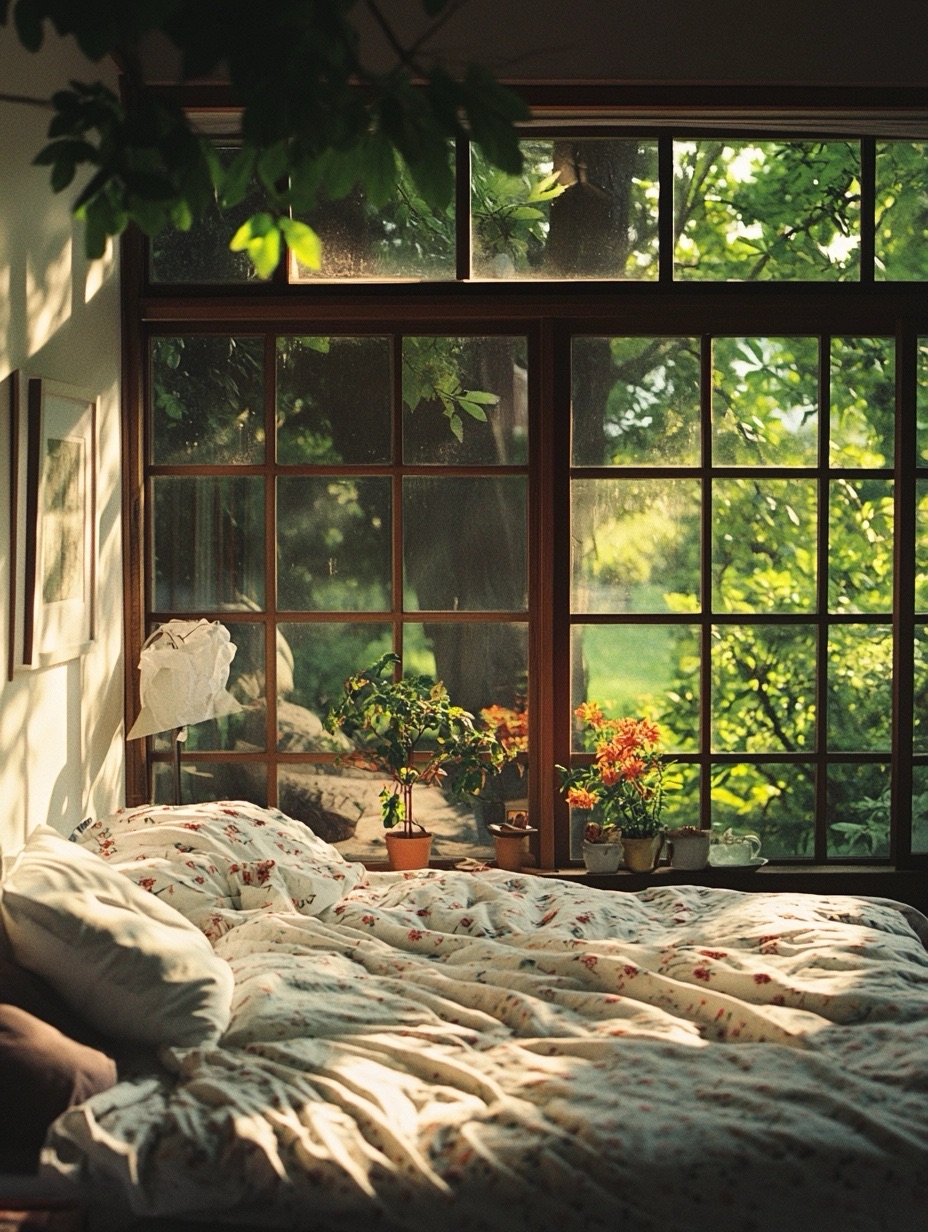
Psychologically, black represents power, strength, and luxury, while white symbolizes purity, calmness, and simplicity. When these colors are paired, they offer an ideal combination for a bedroom, where relaxation and tranquility are essential. In the context of interior design, they allow for flexibility—whether you’re aiming for a modern, sleek look or a more traditional, cozy atmosphere.
2. Creating Depth through Contrast
One of the most significant advantages of using black and white in bedroom interiors is the natural contrast it offers. This contrast immediately adds visual depth to a space, making it feel more dynamic and interesting. For instance, a black accent wall can serve as a powerful backdrop for lighter furnishings, instantly giving the room dimension.
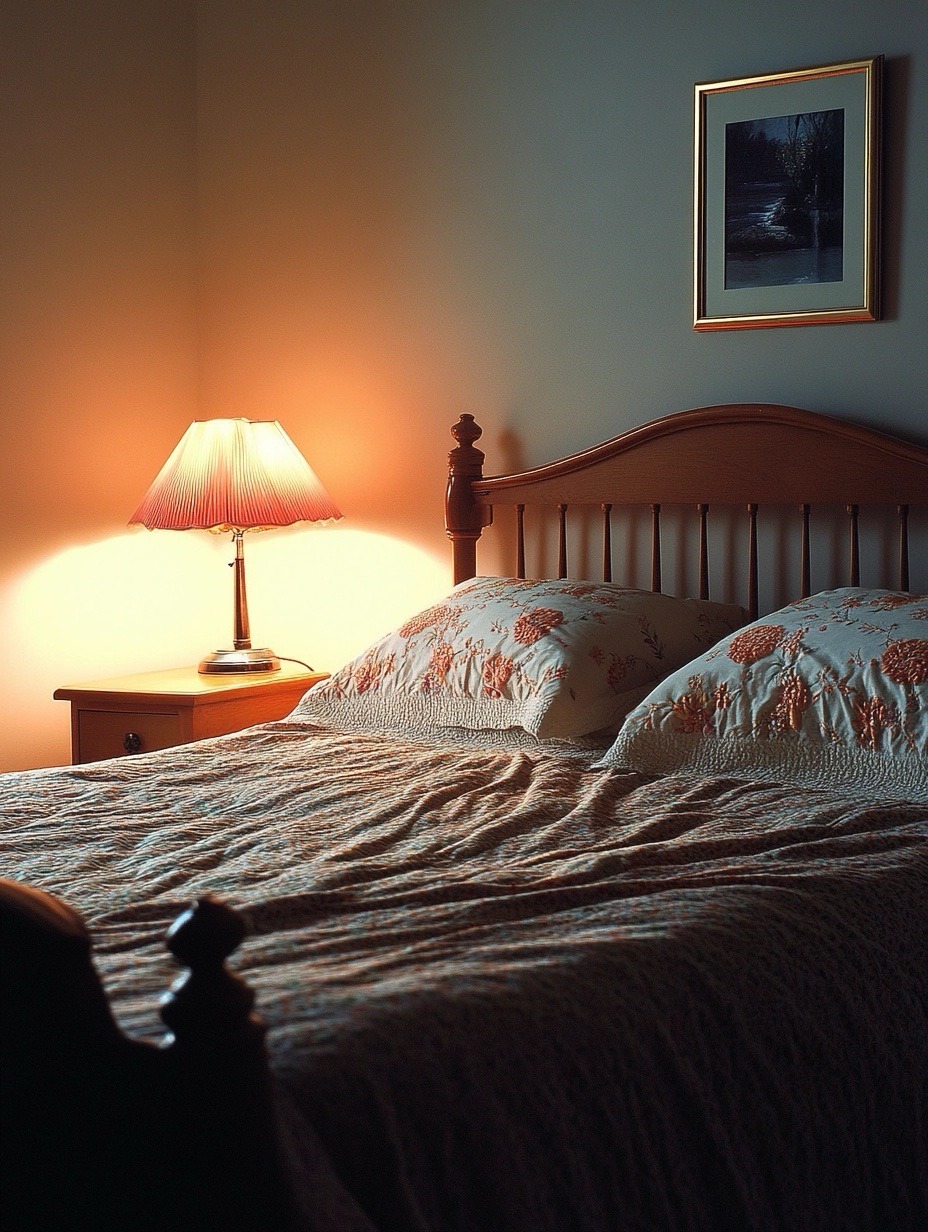
However, it’s crucial to balance the contrast correctly. Too much black can make the room feel smaller and darker, while too much white might create a sterile, flat environment. The key to success in black and white interiors lies in blending both shades in a way that enhances the room’s proportions and natural light. Adding texture and lighting can help soften the contrast and create a more welcoming, layered effect.
3. The Role of Lighting in Black and White Interiors
Lighting plays a pivotal role in any interior, but it is particularly essential when dealing with a black and white color scheme. Because this palette naturally absorbs and reflects light in varying ways, choosing the right lighting can make or break the overall feel of the room. Proper lighting brings warmth and balance, preventing the space from feeling too stark or cold.
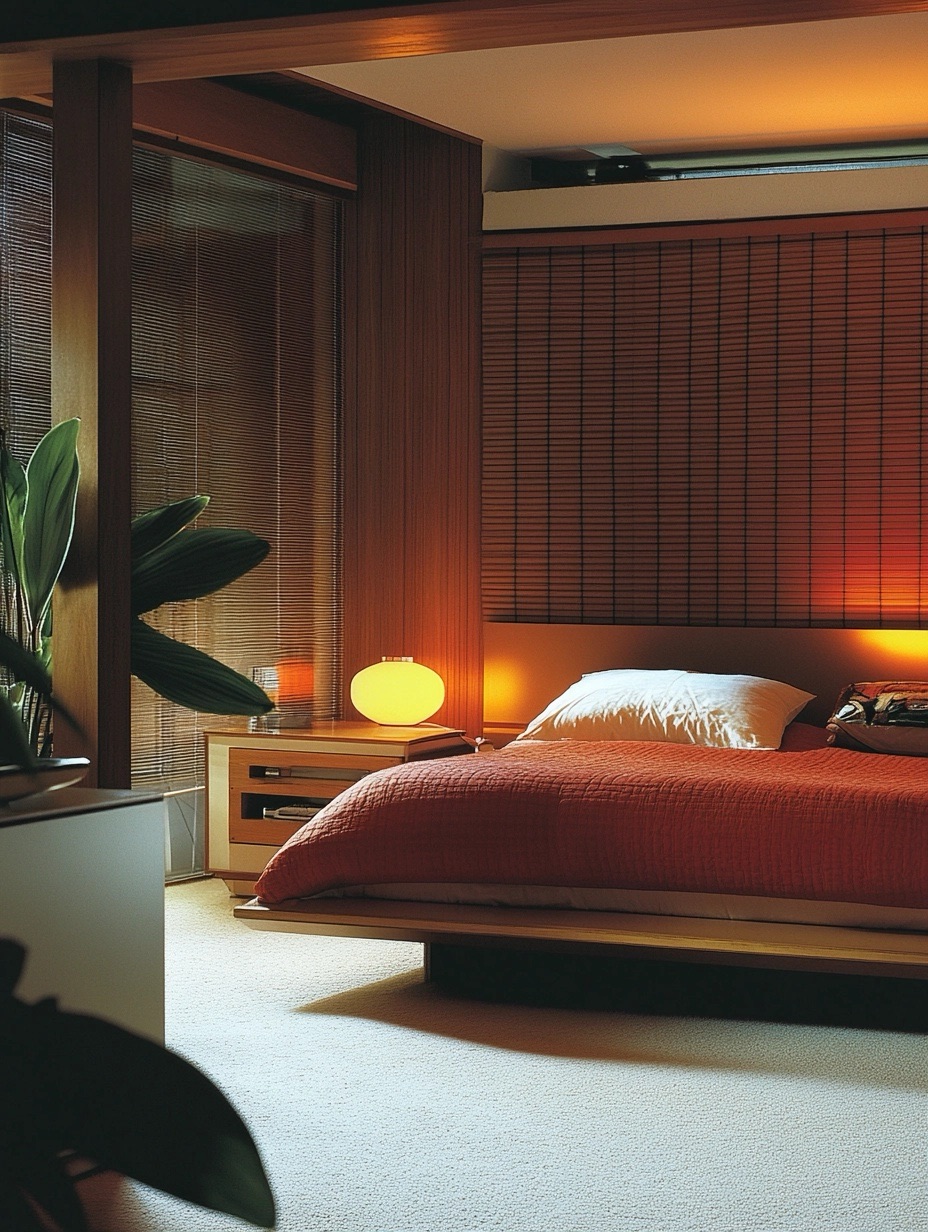
In black and white interiors, warm lighting can soften the boldness of the colors, while cooler lighting can accentuate the room’s modernity. Pendant lights, wall sconces, and even LED strip lighting can be strategically placed to emphasize the contrast between black and white surfaces. These lighting choices not only highlight the room’s design elements but also create depth by casting soft shadows and enhancing textures.
4. Layering Light: The Key to Atmosphere
In a black and white interior, layering light is essential for adding depth and creating a cozy yet sophisticated atmosphere. This technique involves combining multiple types of lighting—ambient, task, and accent lights—to give the room dimension and flexibility.
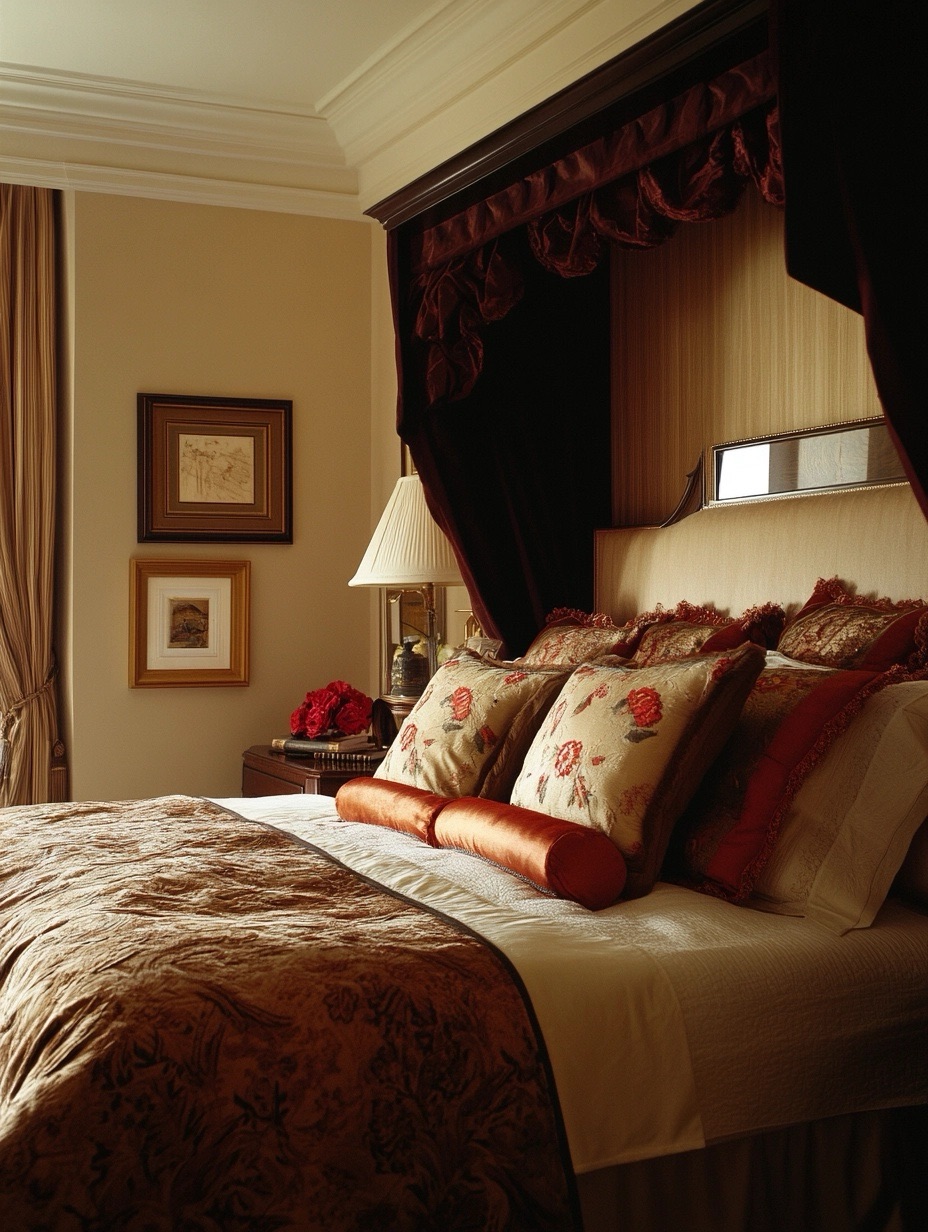
Ambient lighting provides the general illumination for the entire bedroom, such as overhead fixtures or recessed lights. Task lighting, like bedside lamps or reading lights, adds focused illumination for specific activities. Finally, accent lighting is used to highlight certain features, such as artwork, architectural details, or specific areas of the room that you want to emphasize.
By layering these different light sources, you can manipulate how light interacts with the black and white surfaces, creating shadows and highlights that enhance the visual depth of the space. This layered lighting approach not only adds function but also transforms the room’s mood from day to night.
5. The Power of Shadows in Black and White Spaces
In black and white bedrooms, shadows can be just as powerful as the light itself. The contrast between light and shadow plays a crucial role in elevating the design, giving the room a moody, dramatic flair. When done right, shadows can emphasize textures, define shapes, and add a sense of mystery to the space.

To effectively use shadows, consider the direction and placement of your light sources. Wall sconces, for example, can cast downward or upward beams of light, creating striking shadow patterns on the walls. Floor lamps positioned next to large black furniture pieces can also create beautiful shadows, enhancing the depth and texture of the materials. The key is to experiment with different lighting angles to find what works best for your bedroom’s layout and design elements.
6. Textures and Materials: Complementing Black and White
While color is the foundation of black and white interiors, texture plays a crucial role in adding richness and complexity to the space. Introducing a variety of textures—such as soft fabrics, sleek metals, or rough wood—enhances the tactile experience of the room and prevents the color palette from feeling flat or monotonous.
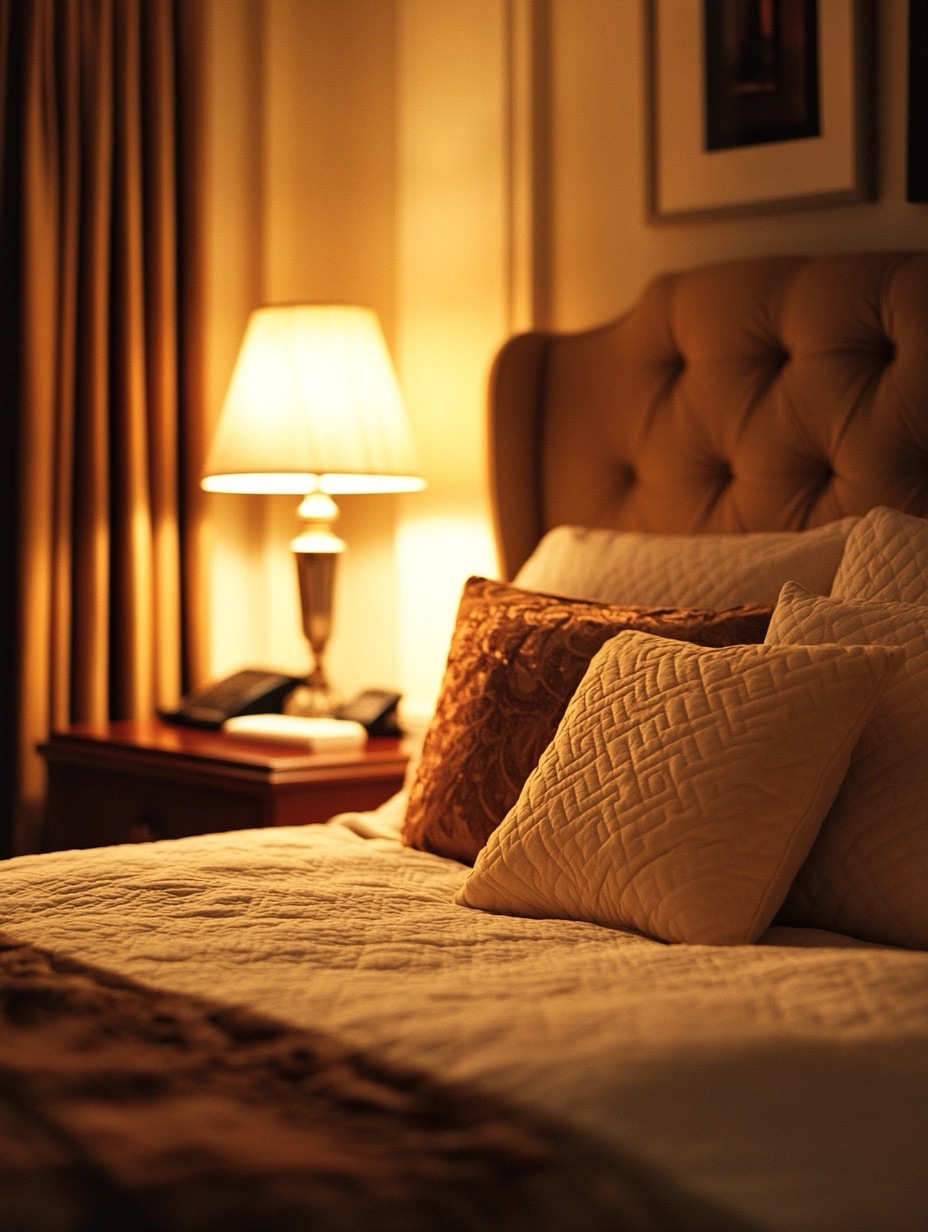
For example, a plush black velvet headboard can contrast beautifully against crisp white bedding, adding both visual and tactile depth. Incorporating metallic accents, like chrome or brass light fixtures, adds a touch of glamour and helps to reflect light around the room. Reflective surfaces, such as glass or mirrored elements, are particularly effective in black and white interiors, as they help bounce light and brighten the space.
By thoughtfully choosing textures and materials that complement your black and white color scheme, you can create a balanced, inviting atmosphere that feels luxurious rather than stark.
7. Enhancing Room Ambiance with Dimmers and Smart Lighting
To create a truly versatile black and white bedroom, consider using dimmers and smart lighting. Dimmers allow you to adjust the intensity of the lighting based on the time of day or the mood you want to set. A soft, low light can make the room feel cozier, while brighter light can highlight the bold contrast of the black and white colors.
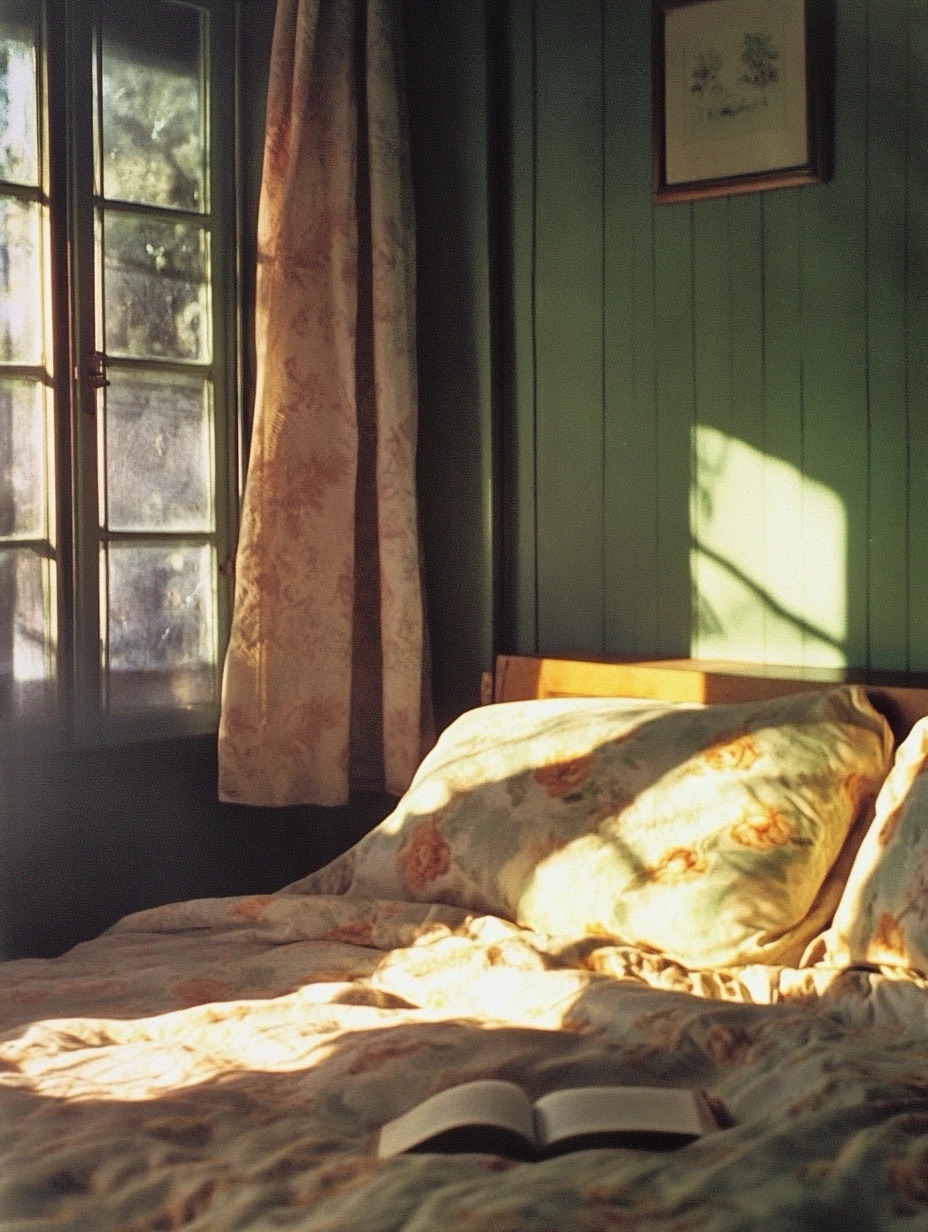
Smart lighting systems take this concept even further, offering the ability to control the lighting through your phone or voice commands. With smart bulbs, you can change the color temperature and brightness with ease, allowing you to seamlessly shift between warm, inviting tones for relaxation and cooler, more vibrant light for reading or working. This flexibility is especially useful in black and white interiors, where light plays such a critical role in setting the overall atmosphere.
8. Incorporating Natural Light in Black and White Bedrooms
Natural light is a powerful tool in enhancing the beauty of a black and white interior. Large windows or skylights can flood the room with sunlight, making the space feel airy and open. The interplay between natural light and the black and white palette creates dynamic shifts in how the room looks throughout the day, from soft morning light to the dramatic hues of evening.

To make the most of natural light, use sheer curtains or blinds that allow sunlight to filter through without completely blocking it. These can soften the harsh contrast of black and white elements while still maintaining the overall design aesthetic. Also, be mindful of how shadows shift during the day, as they can add layers of interest to your bedroom’s interior.
9. Mirrors and Reflective Surfaces: Maximizing Light
Mirrors are a designer’s best friend when it comes to maximizing light in black and white interiors. Not only do they reflect light and make a room appear larger, but they also amplify the impact of both natural and artificial lighting. By strategically placing mirrors opposite windows or light fixtures, you can bounce light around the room, enhancing the sense of depth and space.
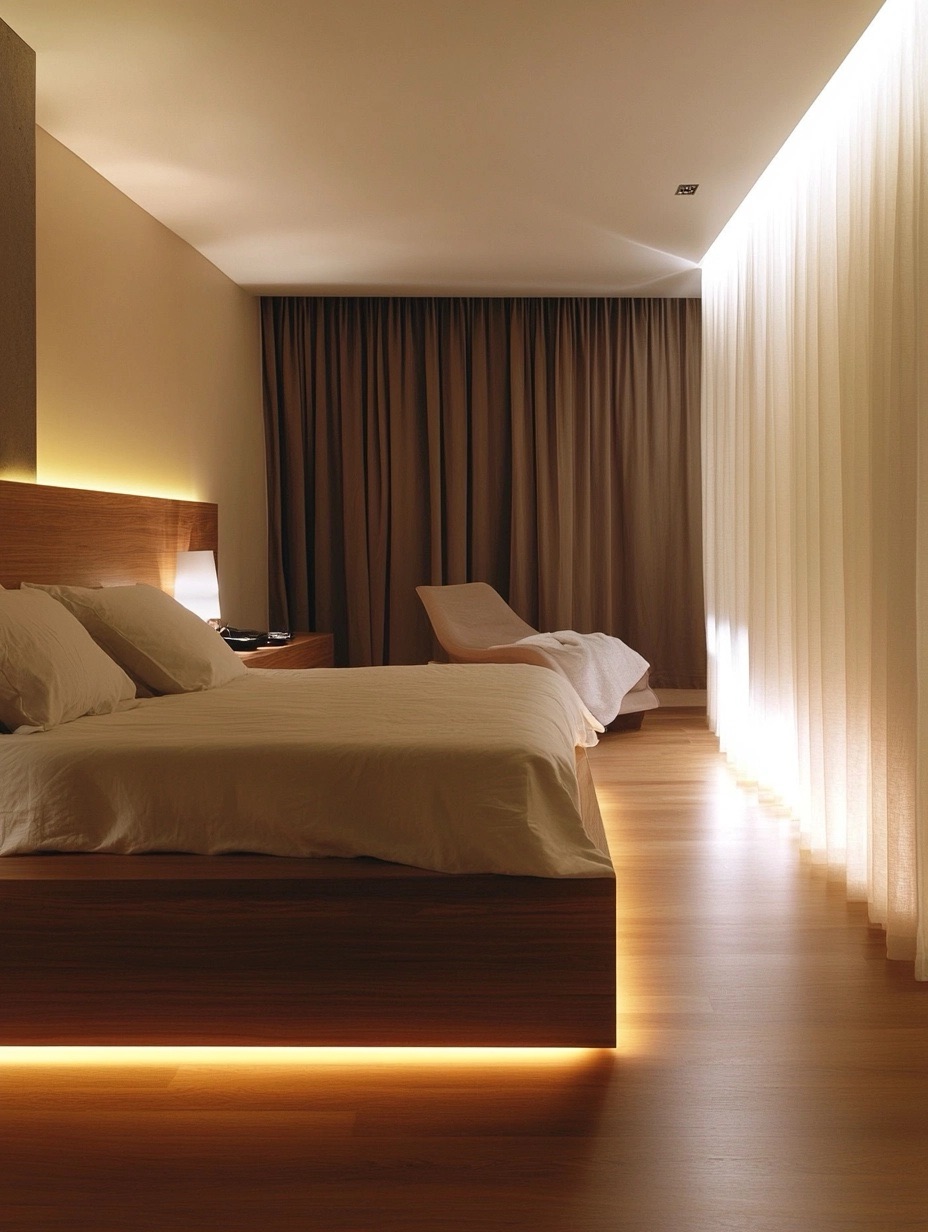
For a sleek, modern look, consider mirrors with simple, frameless designs. If you’re aiming for a more traditional aesthetic, choose mirrors with ornate frames that add a touch of elegance. Reflective surfaces, such as glossy black furniture or metallic decor pieces, can also contribute to this effect, brightening the room and adding a sense of luxury to the overall design.
10. Statement Lighting for a Focal Point
In a minimalist black and white bedroom, a statement lighting fixture can serve as the perfect focal point. Whether it’s a bold chandelier, a modern pendant light, or an artistic floor lamp, statement lighting draws attention and adds personality to the space.
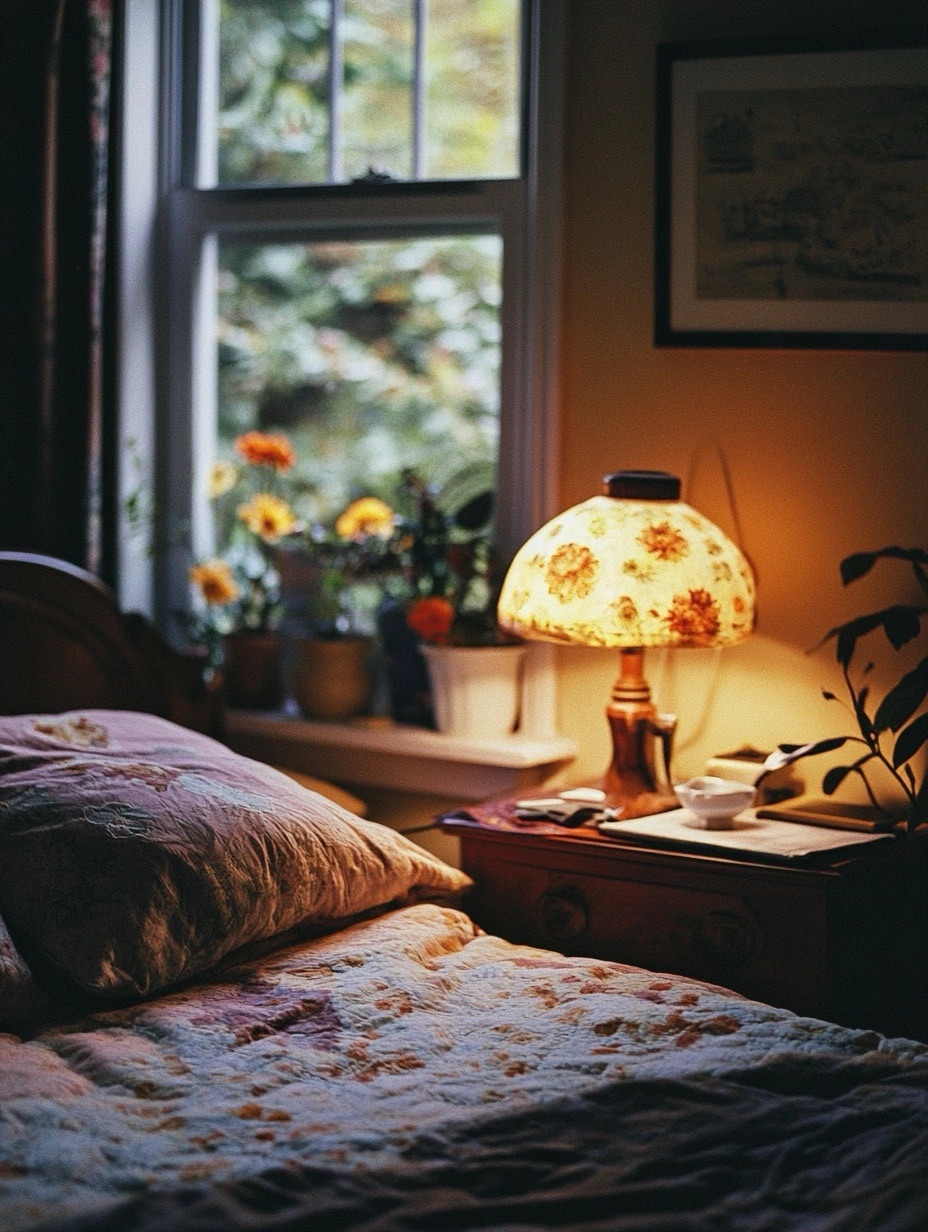
The key to integrating statement lighting into a black and white interior is balance. The lighting fixture should complement the simplicity of the room while also standing out. For instance, a geometric black chandelier can blend seamlessly into a modern design while still serving as a central piece. Alternatively, a large, vintage-inspired lamp in white or metallic tones can add a touch of glamour to a more traditional black and white room.
11. Achieving Warmth in a Black and White Space
One of the challenges of designing a black and white bedroom is avoiding a cold or overly sterile atmosphere. To combat this, it’s essential to use warm lighting and soft materials that add warmth and coziness to the space. Warm light bulbs, for example, can soften the starkness of black and white, creating a more inviting and comfortable environment.
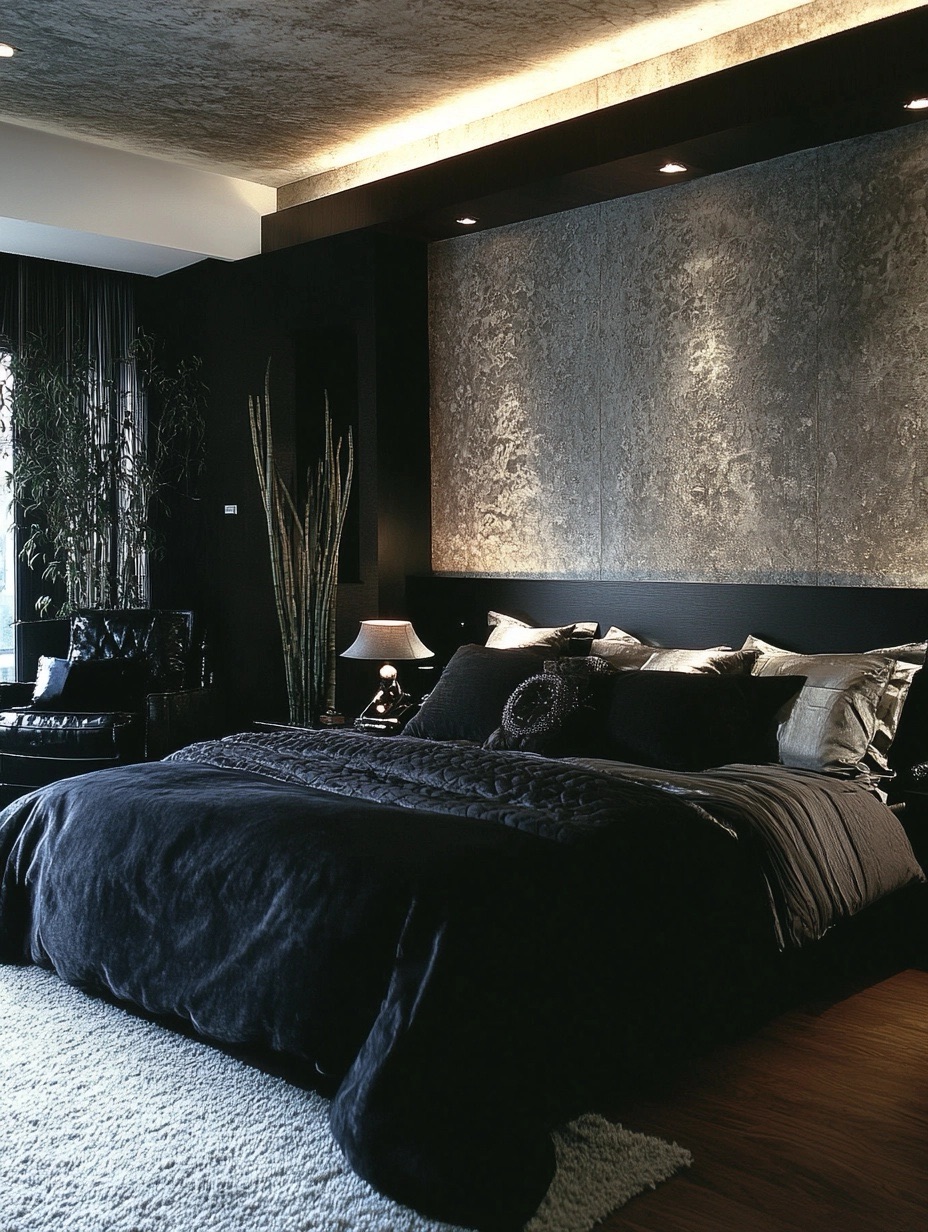
In addition, incorporating natural materials like wood, wool, or linen can counterbalance the cool tones of black and white. A wooden nightstand, a cozy throw blanket, or a soft rug can all introduce warmth into the room, making it feel more balanced and livable.
12. Using Art to Complement Black and White Interiors
Art plays a significant role in black and white interiors, providing a splash of color or an extra layer of contrast to the room’s design. Well-chosen artwork can elevate a minimalist bedroom, adding personality and interest without disrupting the simplicity of the color scheme.
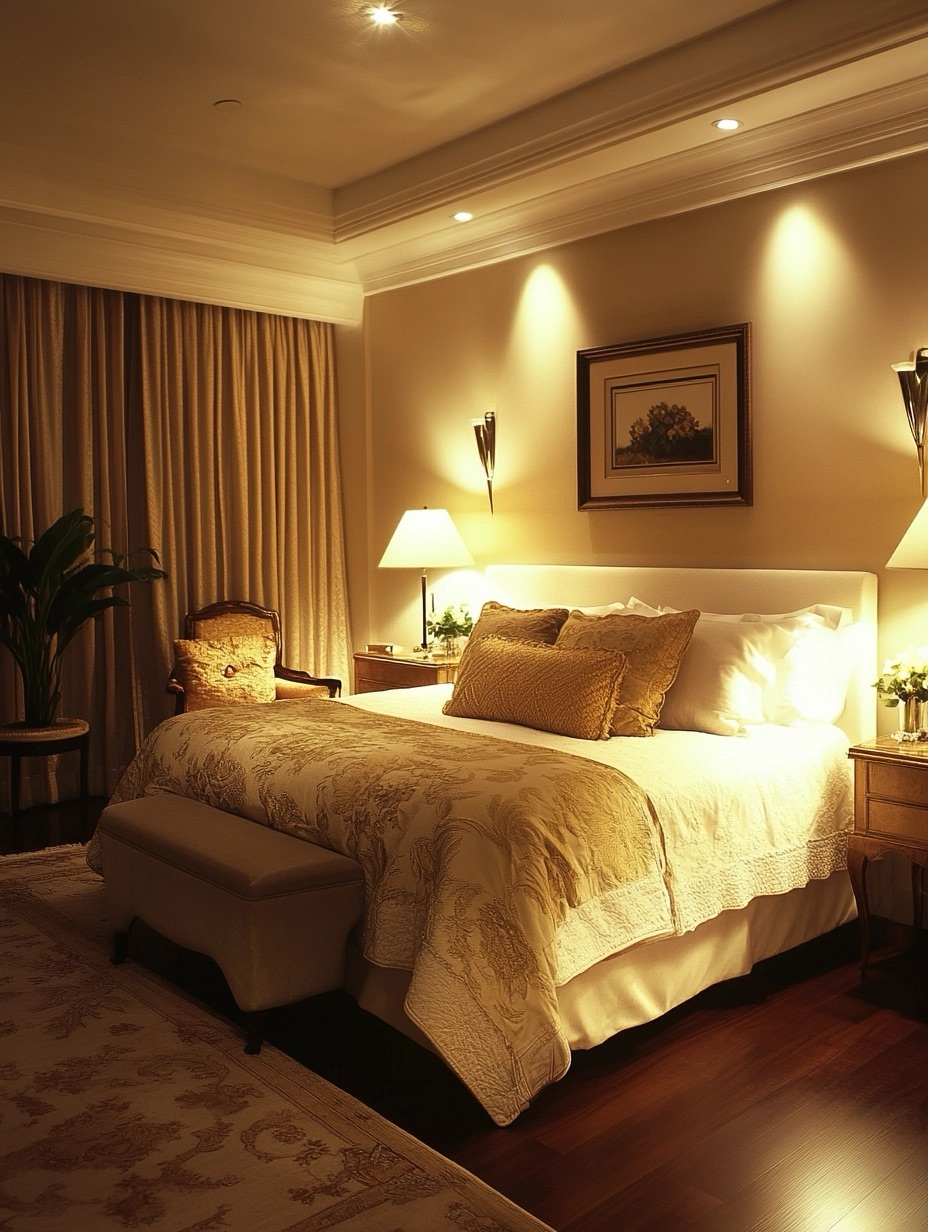
When lighting artwork in a black and white bedroom, it’s essential to choose fixtures that highlight the piece without overpowering it. Picture lights, wall-mounted lamps, or carefully placed accent lighting can draw attention to the art and enhance its impact. A brightly lit piece of art against a black wall, for example, can create a striking focal point that adds depth and drama to the room.
13. Sleek and Modern vs. Cozy and Classic: Different Styles of Black and White Interiors
Black and white interiors offer incredible versatility, easily adapting to both modern and classic styles. If you’re going for a sleek, modern look, opt for clean lines, minimalist furniture, and glossy surfaces that reflect light. Pair this with cool, directional lighting to emphasize the sharp contrast between black and white.
For a more cozy, classic feel, choose softer fabrics, vintage-inspired furniture, and warmer lighting. Chandeliers or table lamps with warm bulbs can add an elegant touch, softening the contrast and creating a more welcoming atmosphere.
14. Budget-Friendly Lighting Solutions for a Stunning Bedroom
You don’t need to spend a fortune to achieve stunning lighting in a black and white interior. Budget-friendly options like LED strip lights, affordable pendant lights, or DIY lighting projects can make a big impact without breaking the bank.
For instance, LED strip lights placed under the bed or along the walls can add a modern, futuristic touch to the space. Similarly, thrift stores and online marketplaces often offer unique, affordable lighting fixtures that can serve as a focal point in your bedroom.
15. Final Tips for Perfecting Your Black and White Bedroom
When designing a black and white bedroom, it’s important to consider all the elements that contribute to the overall look and feel of the space. Lighting, textures, furniture, and decor all play a role in creating depth and atmosphere.
Experiment with different lighting setups to find the perfect balance of warmth and contrast. Don’t be afraid to play with shadows, textures, and reflective surfaces to bring your black and white interior to life. With the right combination of these elements, you can create a bedroom that is both visually striking and incredibly inviting.
Leave a Reply